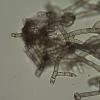
21-12-2025 09:32
Hello.A tiny ascomycete found embedded in wood in

21-12-2025 21:32
Pol DebaenstHello, Garden, Burgweg 19, Veurne, BelgiumOn 10/1

22-12-2025 23:38
Patrice TANCHAUDBonsoir, récolte sur un mur en pierre, apothéci

22-12-2025 00:47
Patrice TANCHAUDBonsoir, récolte à proximité du milieu dunaire

21-12-2025 21:40
Isabelle CharissouBonjour, j'aimerais connaitre les références de

20-12-2025 23:08
Patrice TANCHAUDBonsoir, récolte sur sol sablonneux dans l'arri�

Dear Forum,
On rotten wood of Salix sp. in a moist place I found a helicosporous hyphomycete with branched well-developed conidiophores, brown and septate.The hyaline hollow conidia were coiled in two dimensions and measured 15-18µm.
Using the work of Zhao(2007), the keys brought me to the genus Helicosporium.
Could someone confirm this and eventually give me the right taxon?
Marc
Saludos cordiales

Dear Josep and Chris,
Thank you for your comments and the magnificent article of Goos.
I combined the keys and descriptions of Goos and Zhao. The branched and anastomosing conidiophores, the large denticles (3.5-4.1µ), the large conidial filaments (2.5-2.9µ) and the larger conidia (18-23µ) brought me to Helicosporium lumbricopsis.
Could you agree?
Marc

Sigo pensando en el Helicosporium griseum = Helicosporium lumbricoides
Saludos cordiales.
Josep

Using Goos and Zhao we have to choose between H griseum and H lumbricopsis.H griseum is a commonly found species, reported worldwide. In general it has smaller conidia and smaller filaments compared to H lumbricopsis, which is known as a tropical and subtropical species.
Following Linder(1929) and Moore(1955) the differences between the two species were more environmental than morfological.
H griseum with larger than normal dimensions does not seem unlikely.
Marc
Bonjour Marc,
J'ai déjà été confronté à ce type de récolte. Les études citées sont de bonnes études, sérieuses, mais ne peuvent être suffisantes. En particulier je pense que la connaissance de ces champignons en Europe est insuffisante, et que par conséquent il peut être hasardeux de se baser sur une comparaison seulement morphologique avec les espèces citées par ces études originaires d'Asie pour donner absolument un nom. Avec des données moléculaires, ce serait déjà moins aléatoire.
Alain
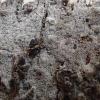
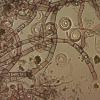
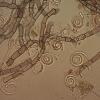
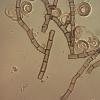
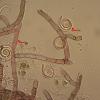
 Helicosporium-1989-v81-p356a-0001.pdf
Helicosporium-1989-v81-p356a-0001.pdf